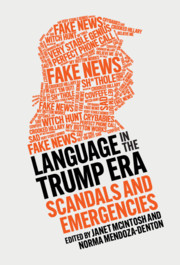Refine search
Actions for selected content:
9 results
3 - Social Chilling Effects
- from Part II - A New Understanding
-
- Book:
- Chilling Effects
- Published online:
- 20 November 2025
- Print publication:
- 20 November 2025, pp 41-48
-
- Chapter
- Export citation
4 - Style, Category and Legal Framework of Mediation
- from Part III - Legal Framework of Mediation in China
-
- Book:
- The Mediation System of China from an Interdisciplinary Perspective
- Published online:
- 23 October 2025
- Print publication:
- 06 November 2025, pp 93-138
-
- Chapter
- Export citation
Chapter 5 - To Put It Delicately
- from Part II - Understanding Cultural Norms and References
-
- Book:
- Lost in Automatic Translation
- Published online:
- 08 October 2025
- Print publication:
- 21 August 2025, pp 69-93
-
- Chapter
- Export citation
1 - Citizen, the Most Important Office in a Democracy
-
- Book:
- Educating for Democracy
- Published online:
- 20 April 2023
- Print publication:
- 27 April 2023, pp 13-19
-
- Chapter
- Export citation

Language in the Trump Era
- Scandals and Emergencies
-
- Published online:
- 18 September 2020
- Print publication:
- 03 September 2020
Introduction: The Trump Era as a Linguistic Emergency
-
-
- Book:
- Language in the Trump Era
- Published online:
- 18 September 2020
- Print publication:
- 03 September 2020, pp 1-44
-
- Chapter
- Export citation
6 - Trump’s Comedic Gestures as Political Weapon
- from Part II - Performance and Falsehood
-
-
- Book:
- Language in the Trump Era
- Published online:
- 18 September 2020
- Print publication:
- 03 September 2020, pp 97-123
-
- Chapter
- Export citation
Chapter 13 - Healing the Bonds of Affection
- from Part III - Deferred Dreams: Reflections on Politics and Society
-
- Book:
- Giving the Devil his Due
- Published online:
- 28 February 2020
- Print publication:
- 09 April 2020, pp 134-144
-
- Chapter
- Export citation
9 - The Language Ideology of Silence and Silencing in Public Discourse
-
-
- Book:
- Qualitative Studies of Silence
- Published online:
- 30 June 2019
- Print publication:
- 18 July 2019, pp 165-185
-
- Chapter
- Export citation
